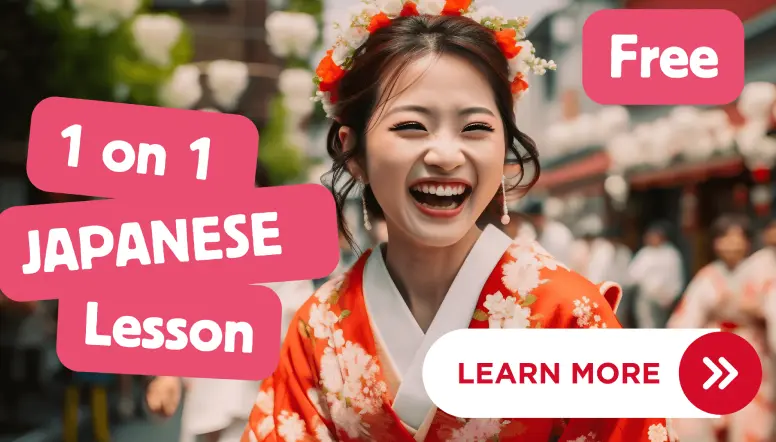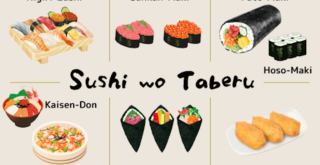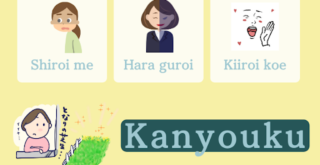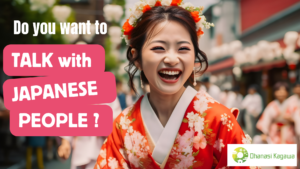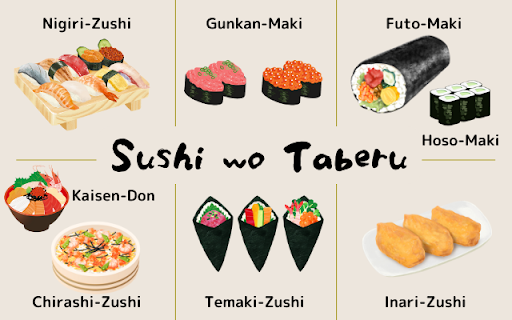
Sushi is always one of the top three things foreigners want to eat when they visit Japan.
Eating good sushi in Japan is one of the things people probably look forward to doing.
But do you know what real sushi is?
Salmon and toro nigiri are not the only types of sushi.
There are more sushi ingredients than you know.
And there are many different types of sushi.
Here are some popular types of sushi that Japanese people also love.
What types of sushi are there?
Do you eat sushi at a high-end sushi restaurant?
Or do you eat sushi at a conveyor belt sushi restaurant?
Sushi is an important part of Japanese culture.
You can find cheap and tasty sushi in many places around you.
You can also easily find sushi at convenience stores and supermarkets.
Try the wide variety of sushi available in Japan.
にぎりずし Nigiri-zushi
Type of sushi with sashimi (sushi ingredients) on top of a bed of vinegared rice.
Most people think of nigiri-zushi when they think of sushi.
The most common types of sushi are: red fish, white fish, hikarimono (silver-skinned fish), boiled fish, squid, octopus, and tamagoyaki (egg omelet).
You can use wasabi to your liking.
ぐんかんまき Gunkan-maki
Sushi made by placing ingredients like salmon roe, sujiko, or negitoro on a bed of vinegared rice and wrapping it with nori (seaweed).
It is called gunkanmaki because it looks like a boat (gunkan).
The fish roe is slightly seasoned, so it can be eaten as it is.
まきずし Maki-zushi
Also called Nori-maki.
It is made by spreading sushi rice over a bed of nori and topping it with sushi ingredients.
ふとまき Futo-maki
Sushi rolled with multiple sushi ingredients, such as sashimi, egg omelets, and cucumber.
During Setsubun (festival to celebrate spring), it is customary to eat sushi rolls called ehomaki to bring in “good luck.”
It is about five centimeters in size and is rolled with a lot of seafood.
ほそまき Hosho-maki
Sushi roll with a single ingredient.
You can use ingredients such as cucumber, natto, negitoro, kanpyo (dried gourd), takuan (pickled radish), and so on.
It is recommended when you want to eat only a little.
ちらしずし Chirashi-zushi
Sushi that is not hand-rolled.
Shrimp, octopus, and other seafood, shiitake mushrooms, and a broiled egg are placed on a bed of vinegared rice.
This sushi is beautiful.
It is customary to eat it on Hinamatsuri (Girls’ Day).
かいせんどん Kaisen-don
Sushi that has not hand-rolled sushi.
It is usually served on a bowl of vinegared rice with sashimi, shrimps, salmon roe, and sea urchin on top.
It is a gorgeous bowl of rice.
てまきずし Temaki-zushi
Sushi made by placing sushi rice on a small piece of nori and wrapping it around your favorite sushi ingredients and vegetables.
Temaki-zushi parties are often held at home.
It is also on the menu at conveyor-belt sushi restaurants.
いなりずし Inari-zushi
Sushi consists of sweet fried bean curd with sushi rice inside.
You can use rice such as simple white rice, go-moku rice, and bean rice.
At first glance, it does not look like sushi, but it is popular among children.
Sushi available in the region
There are sushi specialties in each region of Japan.
Why not try them when you visit Japan on vacation?
【Toyama prefecture】Mashu-zushi
Sushi rice wrapped in light red sakura salmon and wrapped with young leaves.
It is also famous as an ekiben (station bento) at Toyama Station.
【Nara prefecture】Kaki no ha zushi
Oshi-zushi that is made by placing thin slices of vinegared fish such as mackerel or salmon on vinegared rice and wrapping it in persimmon leaves.
【Okayama prefecture】Mamakari zushi
Sushi made from small sappa fish (clupeoid) from the Seto Inland Sea coast, sprinkled with salt, and marinated in vinegar.
Ohanasi Kagawa holds online language exchange events on weekends. Japanese language learners and English language learners are paired together. You then switch between English and Japanese every 15 minutes. This way, both of you can learn a language. Online, you can communicate with Japanese people without having to go to Japan. The rules are designed to ensure that you can participate safely. So, even if you are new to online events, please check them out. This is the perfect event for those who want to spend a little time in Japanese while maintaining their current lifestyle.
That said, you might still not be confident in your Japanese speaking ability. You’re not sure how to study Japanese. For people like that, we are currently offering free Japanese language consultation and free lessons for a limited number of 10 people each month.
You don’t know how to study Japanese. If you are interested in taking Japanese lessons to solve what you don’t understand, please feel free to join us.
If you are interested, please click the URL or image below.
Click here to see more details >>>


